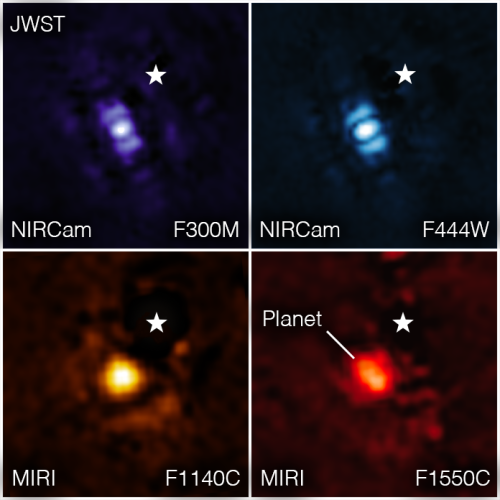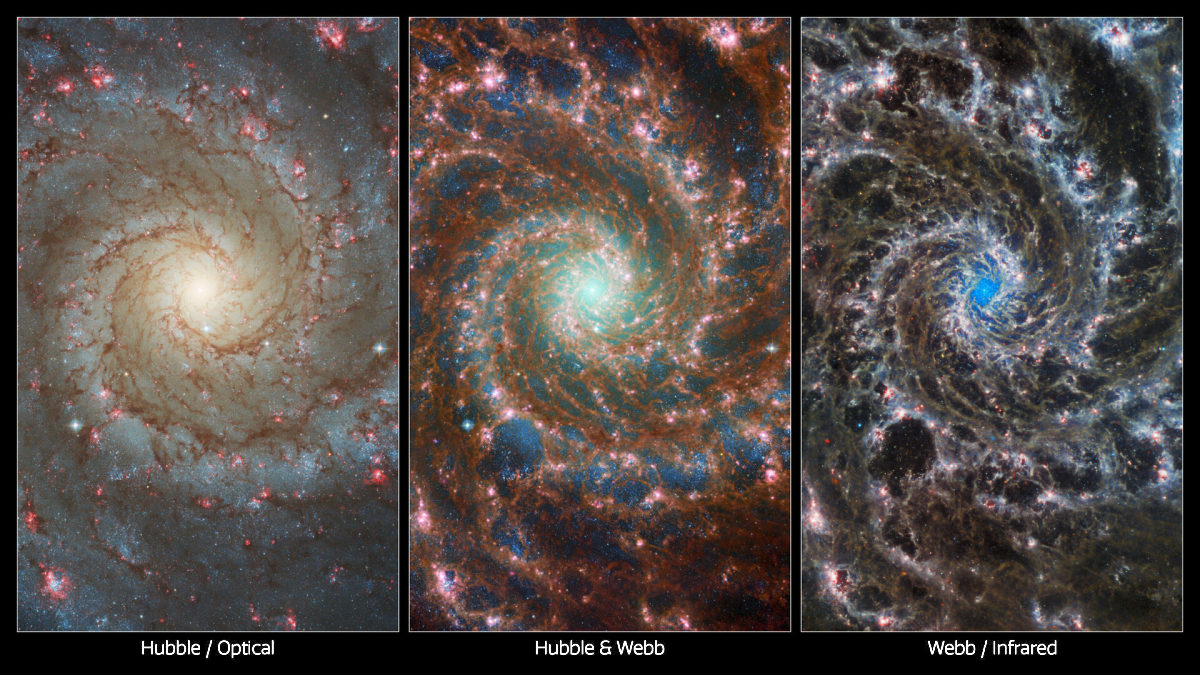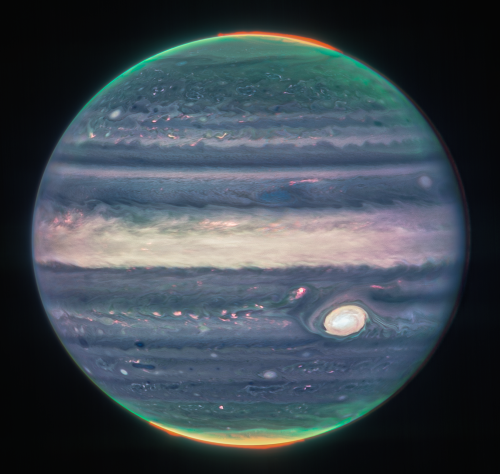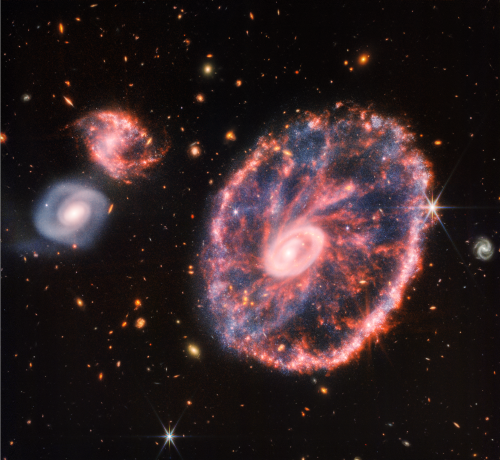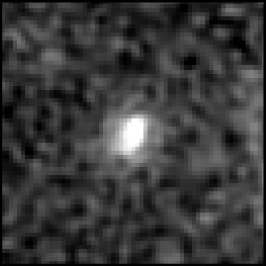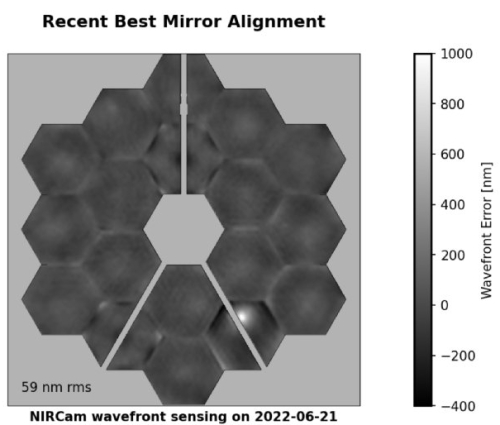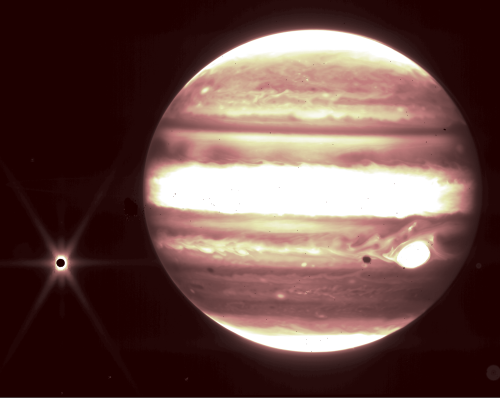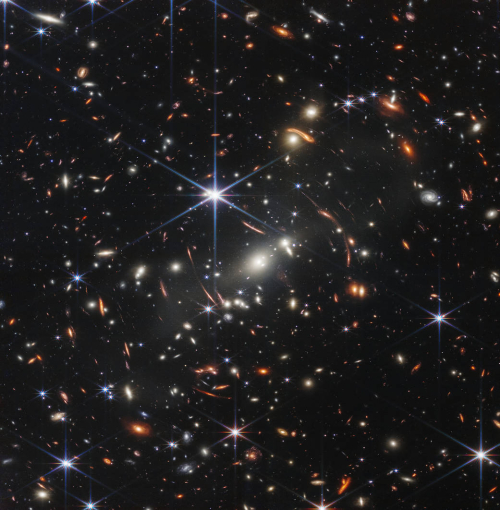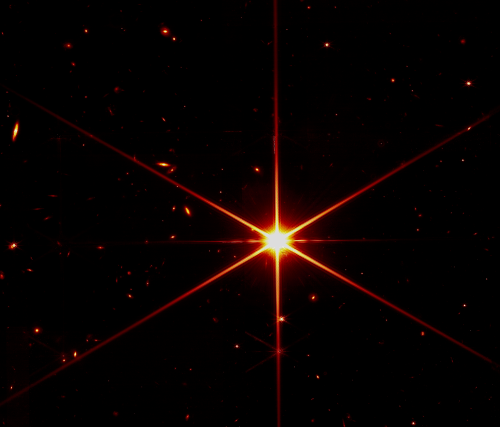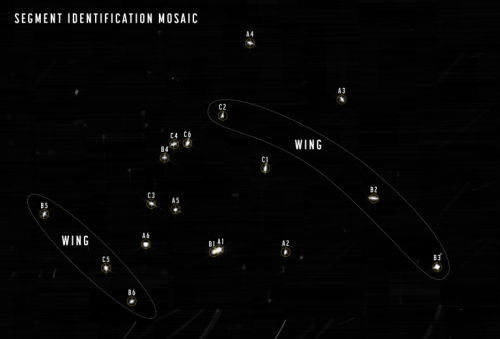Webb obtains first direct infrared images of exoplanet
Using four different infrared instruments on the James Webb Space Telescope, astronomers have obtained the first infrared images of a gas giant with a mass about six to twelve times larger than Jupiter and circling about 100 times farther from its sun.
The montage to the right shows these four images. The white star marks the location of this star, the light of which was blocked out to make the planet’s dim light visible. The bar shapes on either side of the planet in the NIRCam images are artifacts from the instrument’s optics, not objects surrounding the planet.
This is not the first direct image of an exoplanet, as the Hubble Space Telescope has already done so, and done it in the visible spectrum that humans use to see. However, Webb’s infrared images provide a great deal of additional detail about this planet and its immediate surroundings that optical images would not. For example, the MIRI images appear to show us the outer atmosphere of this gas giant.
Using four different infrared instruments on the James Webb Space Telescope, astronomers have obtained the first infrared images of a gas giant with a mass about six to twelve times larger than Jupiter and circling about 100 times farther from its sun.
The montage to the right shows these four images. The white star marks the location of this star, the light of which was blocked out to make the planet’s dim light visible. The bar shapes on either side of the planet in the NIRCam images are artifacts from the instrument’s optics, not objects surrounding the planet.
This is not the first direct image of an exoplanet, as the Hubble Space Telescope has already done so, and done it in the visible spectrum that humans use to see. However, Webb’s infrared images provide a great deal of additional detail about this planet and its immediate surroundings that optical images would not. For example, the MIRI images appear to show us the outer atmosphere of this gas giant.

